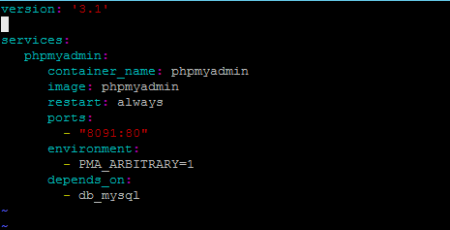First, let's install Docker.
Update OS packages.apt update
Install the necessary packages and add a new repository:
apt install apt-transport-https ca-certificates curl gnupg-agent software-properties-common
curl -fsSL https://download.docker.com/linux/ubuntu/gpg | sudo apt key add -
add-apt-repository "deb [arch=amd64] https://download.docker.com/linux/ubuntu $(lsb_release -cs) stable"
apt update
Now let's install Docker itself.
apt-get install docker-ce docker-ce-cli containerd.io
Checking Docker version:
docker --version

Let's check the status:
systemctl status docker

If it does not start, then run:
systemctl start docker
And add to autorun.
systemctl enable docker

Install Docker Compose
curl -L "https://github.com/docker/compose/releases/download/1.25.5/docker-compose-$(uname -s)-$(uname -m)" -o /usr/local/bin /docker-compose
Set permissions to launch.
chmod +x /usr/local/bin/docker-compose
Check how Docker-Compose was installed:
docker-compose --version

Let's create a *.yaml file for Docker-Compose.
To navigate in the future where and what we have installed, let's create a separate folder for this project in the /home directory and go to it.
mkdir /home/phpmyadmin && cd /home/phpmyadmin
You can also use a different directory to host this and other projects.
Let's use the repository to create the docker-compose.yaml file at https://hub.docker.com/_/phpmyadmin
Create a docker-compose.yaml or docker-compose.yml file,
vim docker-compose.yaml
version: '3.1'
services:
phpmyadmin:
image: phpmyadmin
restart: always
ports:
- 8090:80
environment:
- PMA_ARBITRARY=1
Where:
phpmyadmin: name of your container;
image: phpmyadmin: image from which phpmyadmin will be deployed
8090:80 - port 8090 which we will use to connect to phpmyadmin
restart:always - indicates that the container will be restarted when the server crashes or restarts
PMA_ARBITRARY=1 - indicates that it is possible to connect to an arbitrary database server (How to bind a phpmyadmin panel to a specific server can be found in this article)
Run our script (for this you need to be in the directory where our file was created. In this case, it is /home/phpmyadmin):
docker-compose up -d
We check:
docker-compose ps
docker ps

To view the logs, use the command
docker logs -f phpmyadmin
You can also install only in docker:
docker run -d --restart always --name phpmyadmin -e PMA_ARBITRARY=1 -p 8090:80 phpmyadmin
To connect to PhpMyAdmin - open a browser and go to - http://YOUR_IP_SERVER:8090/
Now we can connect the database server.
In the Server field, enter the IP of the database server, in the Username field - the user (in this case, it is root), in the Password field - the password of the database server root user.
If you have not yet installed a database server in Docker, then in the article How to install MariaDB in Docker we will look at how to do this, and we will see how to deploy this server, databases with phpMyAdmin.

